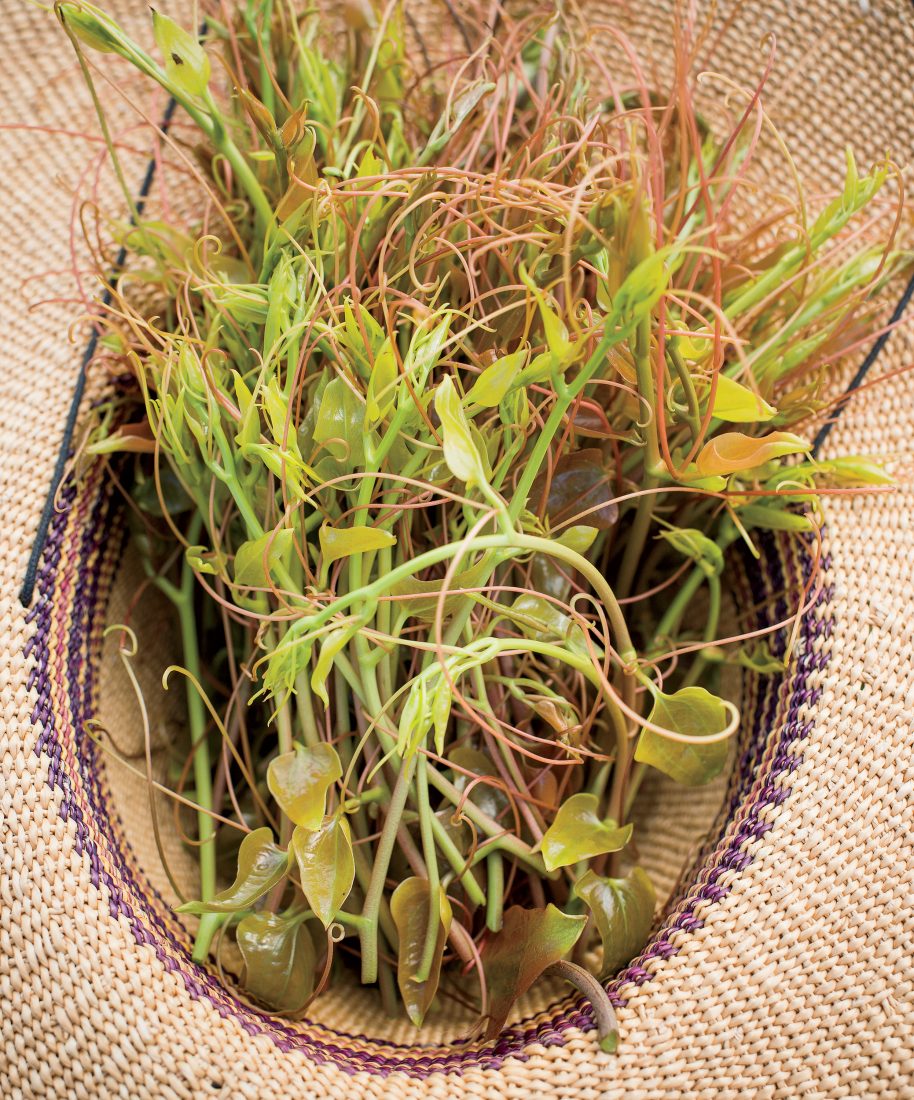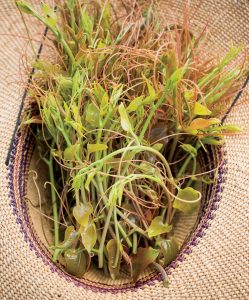Like grits or scrapple, the term chainey briar just doesn’t sound appetizing. It brings to mind something prickly—certainly not something you’d ever eat. But these tender wild shoots of the smilax vine, which grows plentifully along sandy beach lanes and coastal marshy areas from the Lowcountry south to Florida, are a delicious companion to warm weather. If ramps are a forager’s garlic, then chainey briar is her asparagus.
Also called catbrier, bull briar, and greenbrier, chainey briar is the curly, green native vine Smilax bona-nox, readily identifiable by the spade-shaped leaves that distinguish it from other vines that may be growing in the same terrain. The edible part of the plant stretches from the tender tip of each shoot about six inches down. Chainey briar grows most vigorously in spring, late summer, and early fall, when the sun is less intense, and when raw, it has a fresh green asparagus-and-olive-oil flavor; quickly blanched or grilled, it becomes even more appetizing and tender. The vine appears often in community cookbooks of the rural sea islands, like Edisto and Yonges, from the last fifty years; the Southern-food sage Nathalie Dupree has found even earlier references dating back to the 1700s.

Photo: Brennan Wesley
Daniel Heinze (left) and Matt Lee.
Chainey briar almost never shows up in farmers’ markets, so you must forage for it. And though it may never achieve the cult status that ramps have gained over the last decade, a growing number of contemporary chefs are rediscovering why it was once common in home kitchens. At McCrady’s in Charleston, chef de cuisine Daniel Heinze grills chainey briar and tosses it with watercress stems, serving it like a salad, with tarragon puree and green tomato marmalade. Heinze grew up in Florida, tramping through patches of chainey briar on his way to surf the breaks of Vero Beach, and these days, he says, “going out to the beach and foraging for chainey briar and purslane is my escape from the world.”
Another Charleston chef, Slightly North of Broad’s Frank Lee, has long been a chainey briar booster. Lee has been picking it for twenty years from a path to the beach, near where he lives. “It’s crazy,” he says. “I can pick a pound or two in thirty minutes.”
At home, Lee blanches the shoots in salt water—literally for seconds—and gives them a quick toss with olive oil and garlic in a skillet. At Slightly North of Broad, he tosses blanched chainey briar with a vinaigrette and uses the cold salad as a garnish for hanger steak or soft-shell crabs, though he does admit that the name can be problematic. “When we put ‘greenbrier shoots’ on the menu, our guests don’t know what to think,” he says. “But when we call it ‘wild asparagus,’ they have no problem with it.”










